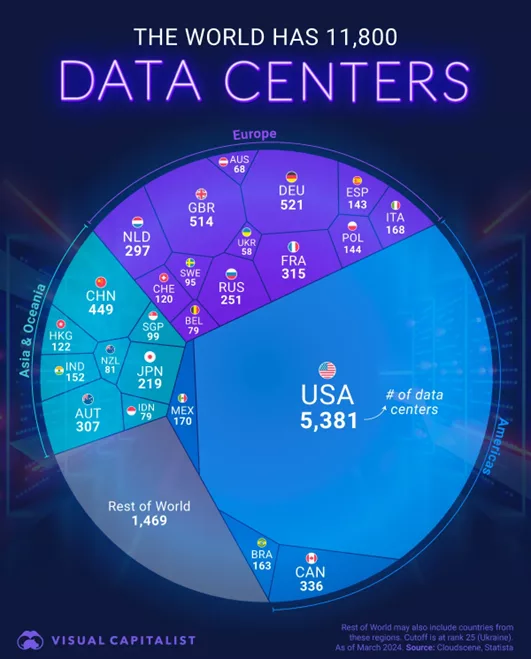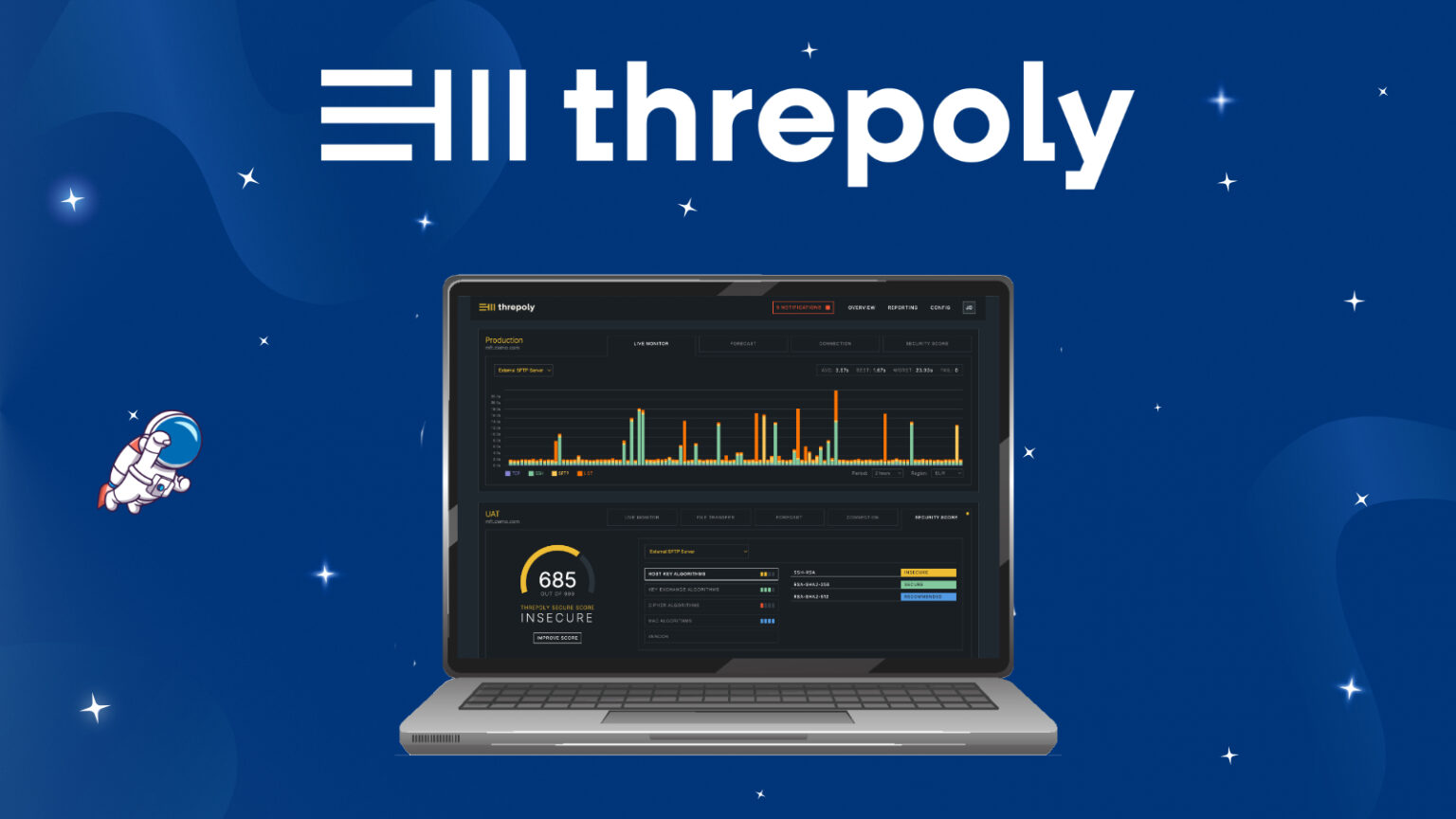“Where is our data being stored?” is a question many European organisations are asking themselves recently. With all the current events going on in the world, data sovereignty has become one of the most relevant topics of 2025. Obtaining European data sovereignty basically means that all data generated in the European Union should be handled based on EU laws and regulations, and also be insured data access, storage and usage within the EU area this is too safeguard your data from external players into your data. But this is not always the case since there are so many different places to store your data.
To illustrate this point, here is a 2024 infographic showing the main data centers around the world.
There are approximately 11,800 data centers worldwide:
5,381 are in the United States, accounting for just under 50%
2,773 are in Europe, including Russia
1,508 are in Oceania and Asia
2,138 are in the rest of the world (including Mexico, Canada, and Brazil)

Why the hype?
But why is this such an important topic right now? There are a couple main reasons that give us some insight as to why data sovereignty is hot right now. Let’s take a look.
To start off with the regulations and legal frameworks we are dealing with. The European GDPR in combination with other national regulations forces organisations to strictly handle personal data and assure it is in line with the specific guidelines. Combining this with the law that several countries are enacting allowing them to access data, that is being stored there, for national security, which means that you could lose control over your data. Data sovereignty ensures that sensitive data is subjected to the laws and regulations of the area in which it is stored.
Furthermore, we are currently dealing with a lot of geopolitical instability and security risks. This could lead to increased state-sponsored cyberattacks, but can also lead to restrictions on data access or service availability. Which would impact businesses that rely on data flows that are crossing borders.
Lastly, transparency on what is going on with your data and maintaining control over it is essential for building trust and creating a competitive advantage for your customers and partners. As data sovereignty also ensures them that their data is controlled and safe in your hands.
What does this mean for your file transfers?
We are seeing this need for data sovereignty also back in our daily work. Files are filled with important and sometimes restricted data, transferring them across borders or via cloud services gets risky for data sovereignty. Regulations around sovereignty like GDPR impact them by requiring robust data protection measures for file transfers that are crossing European borders, transfers to countries that don’t have adequate data protection laws could even be fully restricted.
When transferring or storing sensitive data, four key questions matter. Data residency asks where your data physically resides during and after transfer which is important for GDPR. Provider jurisdiction checks if your vendors fall under foreign laws like the U.S. CLOUD Act, which may conflict with EU privacy rules. Encryption should be strong both in transit and at rest and ideally, you control the keys. Lastly, auditability ensures you can prove compliance during audits. Without clear answers to these, your data security and regulatory posture could be at serious risk.
What now?
Building compliance into your file transfer strategy means embedding privacy, security, and accountability into every step. Start with data mapping and classification to understand what types of data you’re transferring and their sensitivity. Then you should back this up with strong contracts and Standard Contractual Clauses (SCCs) to define how data is protected when shared with third parties.
Furthermore, you should conduct regular audits and risk assessments to spot vulnerabilities and ensure ongoing compliance. At the human level, implement employee training and strict access controls to prevent misuse or accidental exposure.
To align with European data sovereignty, your strategy should prioritize infrastructure transparency, know exactly where your data is stored and how it moves. Use strong encryption both in transit and at rest, and crucially, retain ownership of encryption keys.
Make auditability a priority: you must be able to show who accessed data, when, and why. Finally, favour EU-based providers and partners who are governed by EU laws and privacy principles.
By combining legal, technical, and organizational controls, you create a secure, compliant file transfer process that meets both GDPR and customer expectations.
Looking ahead
The EU is advancing digital autonomy through initiatives like GAIA-X, which aims to build a secure, transparent, and interoperable data infrastructure rooted in European values. This reflects a broader shift: data sovereignty is no longer just a regulatory checkbox but it has also become a strategic imperative.
In parallel, more businesses are moving away from purely public cloud solutions and adopting hybrid or private cloud MFT (Managed File Transfer) architectures. This gives them greater control over where data resides, how it moves, and who has access, while still benefiting from cloud scalability.
Motivation for these developments goes beyond compliance. Trust and reputation hinge on how organizations handle sensitive data. Customers, partners, and regulators increasingly expect clear safeguards and accountability.
Moreover, operational resilience is at stake. Companies that rely too heavily on global cloud vendors (especially those subject to non-EU laws) face risks like unauthorized access, data localization conflicts, or service disruptions tied to geopolitical issues.
Embracing data sovereignty helps future-proof your organization by aligning with evolving regulations, strengthening stakeholder confidence, and building more resilient, transparent digital ecosystems.
https://dcmag.fr/ou-sont-les-data-centers-dans-le-monde/
https://data.europa.eu/en/news-events/news/eu-data-act-new-era-data-economy-and-open-data-integration-0




